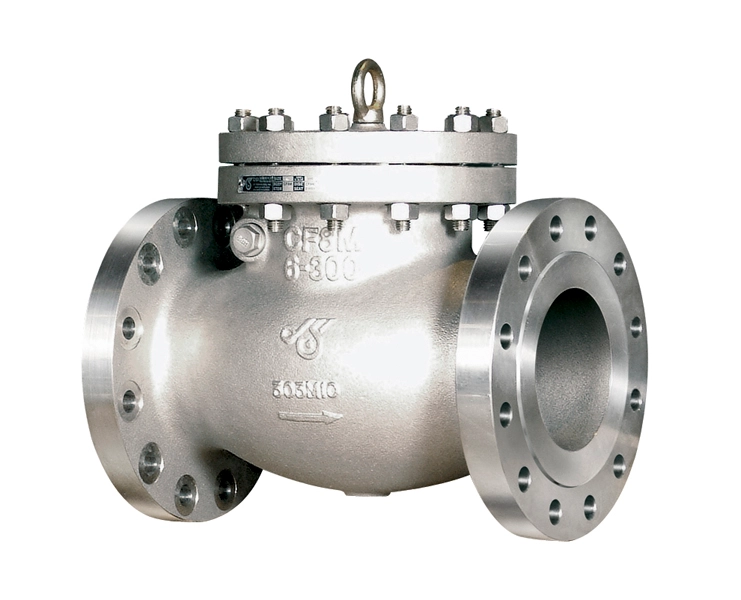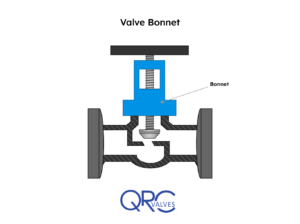Generally, the classification of valve bonnets corresponds to how it fastens to the valve body. In this article, you will learn more about a valve bonnet, types of valve bonnets, the causes of leakages, and their repair or prevention.
Valve Bonnet
A valve bonnet covers the opening on top of a valve body. As a pressure-retaining part of a valve, the bonnet and its connection to the body are exposed to the operating fluid. As a result, they must withstand the operating pressure and corrosive effects of the fluid.
Moreover, the bonnet is either cast or forged from similar material grades as the body, to avoid placing dissimilar metals in contact. The bonnet is a critical part of the valve as internal components such as the stem and disc insert into the valve body, before attaching the bonnet to hold all parts together. The attachment mechanism could be in the form of threading, bolting, or welding.
Types of Valve Bonnet
The attachment between the bonnet and body is a pressure boundary. So, the type and its accompanying gasket must provide sufficient sealing at the working pressure along with fluid compatibility.
Threaded Valve Bonnet
Threaded bonnets offer a simple structure and low-cost design. However, there is fragility in this setup. The gasket of the valve bonnet closely attaches to the rotating surface, often leading to friction during tightening and loosening. As a result, the joint surface is likely to damage thereby causing leakages. Another downside is that as the valve size gets larger, the torque required to tighten the valve increases significantly. Therefore, this bonnet type is usually limited to nominal sizes of DN80 and below.
To improve this design, some versions use a separate threaded collar to fasten the bonnet to the valve body. Thus, even if the bonnet is tightened frequently, there is no relative motion at the joint surface between the bonnet and valve body. Although this helps mitigate the risk of leaking, the restriction on valve sizing remains. Due to this, threaded valve bonnets typically apply to non-critical services such as plumbing and heating shut-off.
Welded Valve Bonnet
Using a welding connection for bonnets provides a more reliable joint than threads because it eliminates leak paths. In addition, a welded connection is not limited by operating temperature and pressure, nor does it restrict the size of the valve. However, valves using this connection are difficult to access for maintenance. As a result, welding connections are suitable for valves that can operate for a long period without maintenance, disposable valves, and valves that are difficult to assemble. In some valves, the combination of welding and threading provides double protection against leakages.
Bolted Valve Bonnet
The application of bolt connections for bonnets spans all sizes and operating pressure. However, the size and weight of the valve increase along with the operating pressure. Another challenge with bolt connections is bolt load-bearing capacity decreases drastically if the operating temperature exceeds 600 ℉ (350 ℃). In such demanding applications, it is common to weld the flange hermetically to buttress the bolts. This type of bonnet utilizes a variety of gaskets depending on operating pressure, temperature, and process media.

Pressure Seal Bonnet
This is an ideal design for high-pressure applications in pressure classes of 600# to 4500#. It is a unique bonnet design. As the internal pressure increases, the joint surface compresses due to the configuration of the thrust/sealing rings fitted within both the bonnet and valve body. The higher pressure works to increase the sealing capability of a pressure seal bonnet design.
The pressure seal rings are usually made from graphite with stainless steel wire re-enforcement. This material provides a better seal by combining the flexibility of graphite with the strength and anti-corrosive features of stainless steel. The pressure seal bonnet design eliminates the need for a larger, heavier structure to contain increasing pressure levels.
Additionally, pressure seals provide easy assembly and disassembly via insertion and removal of the sealing rings via a valve body orifice. As such, this design suits applications that require frequent maintenance. It should be noted that the pressure seal ring requires replacement after repairs. Generally, bolted and pressure seal bonnets provide the best option in higher pressure applications, Pressure seal bonnets become the only option in very high operating temperatures.
Bonnetless Valves
Although this is not a type of bonnet, it is important to mention that some valves do not have bonnets. As a result, the only pressure-retaining part is the valve body. This eliminates points of leakages from the bonnet-body joint or gasket. Also, it makes maintenance quicker with a one-step removal of all working parts and allows for in-line repair. This removal typically occurs via a box opening, which should be large enough for all valve parts to pass through. Bonnetless valves result in a more compact, lightweight design, but still possess suitability for high-pressure applications.
Leakages and Repair
As a pressure-retaining part of a valve, a bonnet/body gasket area is prone to leakage and requires some repair or replacement occasionally. Leakages could either be from the bonnet or from its connection to the valve body. There are several causes of leakages, some of them are as follows:
- The manufacturing of bonnets occurs either by forging or casting. Poor casting quality such as slag inclusions, blisters, and loose structures, may result in leakage.
- Leakage may occur from impact loads such as hammer strikes. This is why it is advisable to avoid impact strikes as cast iron in particular is prone to crack under impact loads.
- In cryogenic valve applications, it is possible for the bonnet temperature to become too low and cause the packing to freeze and leak. As a result, engineers should specify extended bonnets with enough room for insulation. Cracking may also occur when the air temperature in the working environment falls below minus 20°F.
- Leakages at the bonnet-body joint could occur due to stress cracks and slag inclusion from poor-quality welds. For threaded, bolted or pressure seals, leakage may stem from uneven contact surface due to corrosion, factory defects, improper gasket installation, or inadequate contact pressure.
Some steps to prevent leakage are as follows:
- Ensure suitable casting quality by carrying out tests according to industry regulations, prior to installation.
- Technicians should never strike a bonnet or place heavy loads on the valve. For large-diameter valves with heavy actuators, it is necessary to install them with a bracket or mounting kit that bears the load.
- Valves in cold temperatures require insulation and perhaps supplemental heat. In addition, technicians should drain these valves of any liquid whenever they are out of service.
- The appropriate procedures must be followed when fastening the bonnet to the valve body. Engineers must specify gaskets compatible with the process media and technicians must carry out proper weld testing.


Recent Comments